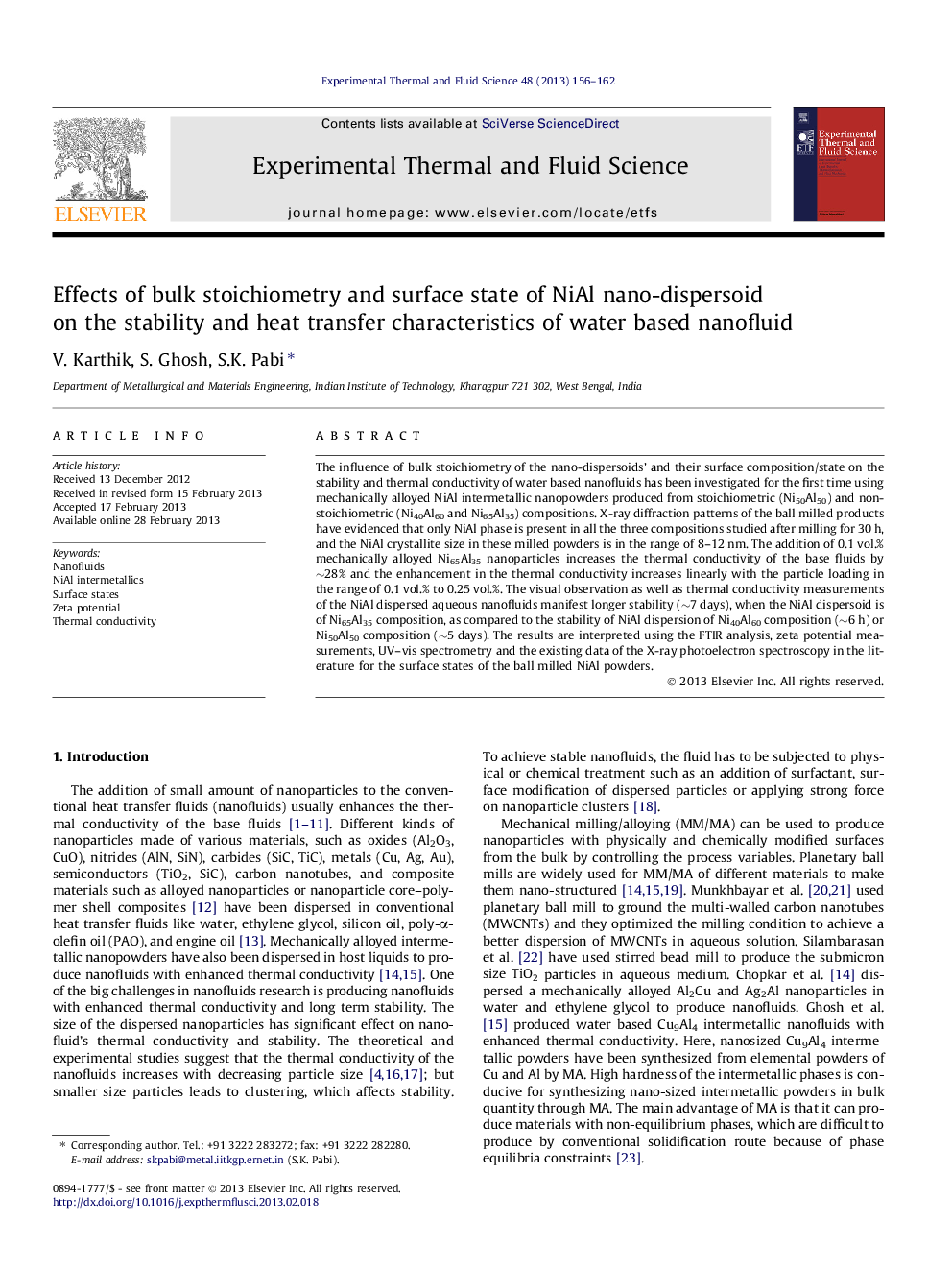| کد مقاله | کد نشریه | سال انتشار | مقاله انگلیسی | نسخه تمام متن |
|---|---|---|---|---|
| 651739 | 1457428 | 2013 | 7 صفحه PDF | دانلود رایگان |

The influence of bulk stoichiometry of the nano-dispersoids’ and their surface composition/state on the stability and thermal conductivity of water based nanofluids has been investigated for the first time using mechanically alloyed NiAl intermetallic nanopowders produced from stoichiometric (Ni50Al50) and non-stoichiometric (Ni40Al60 and Ni65Al35) compositions. X-ray diffraction patterns of the ball milled products have evidenced that only NiAl phase is present in all the three compositions studied after milling for 30 h, and the NiAl crystallite size in these milled powders is in the range of 8–12 nm. The addition of 0.1 vol.% mechanically alloyed Ni65Al35 nanoparticles increases the thermal conductivity of the base fluids by ∼28% and the enhancement in the thermal conductivity increases linearly with the particle loading in the range of 0.1 vol.% to 0.25 vol.%. The visual observation as well as thermal conductivity measurements of the NiAl dispersed aqueous nanofluids manifest longer stability (∼7 days), when the NiAl dispersoid is of Ni65Al35 composition, as compared to the stability of NiAl dispersion of Ni40Al60 composition (∼6 h) or Ni50Al50 composition (∼5 days). The results are interpreted using the FTIR analysis, zeta potential measurements, UV–vis spectrometry and the existing data of the X-ray photoelectron spectroscopy in the literature for the surface states of the ball milled NiAl powders.
► Stoichiometric/non-stoichiometric nano-sized NiAl was dispersed in water with surfactant.
► Effect of dispersoid surface states on stability of nanofluid was studied for first time.
► Higher free-Ni content in the Ni65Al35 particle surface favored stronger adsorption of surfactant.
► Stronger adsorption of surfactant resulted in longer stability of nanofluid.
Journal: Experimental Thermal and Fluid Science - Volume 48, July 2013, Pages 156–162